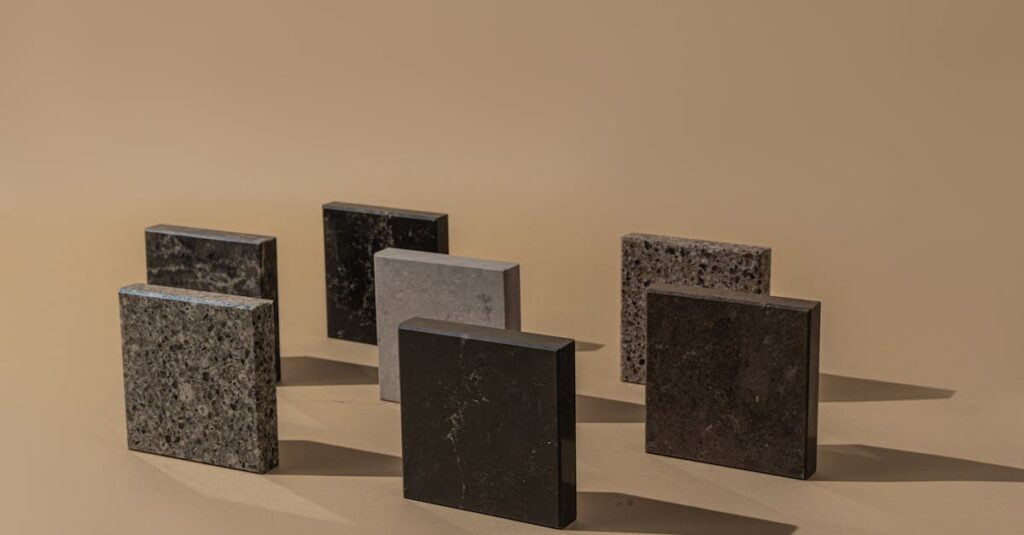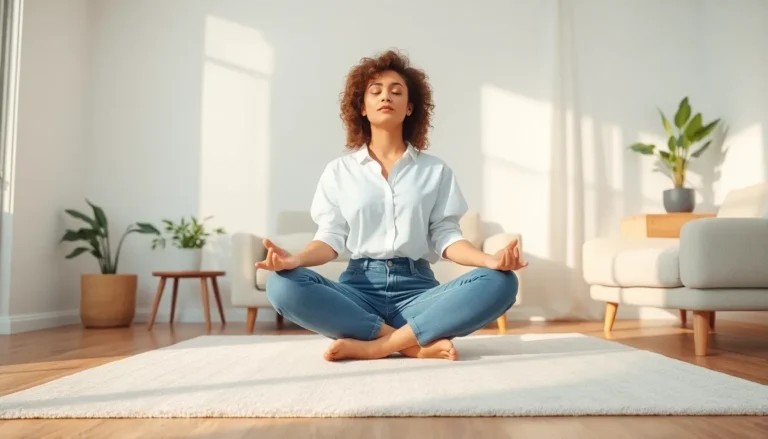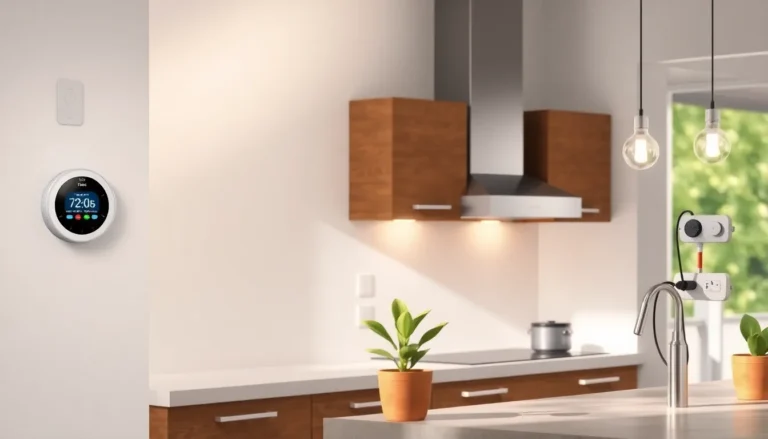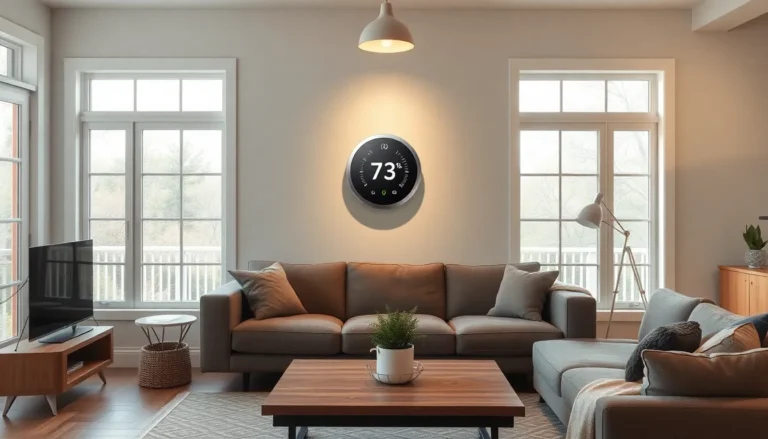Table of Contents
ToggleInterior design isn’t just about making a space look pretty; it’s about creating an experience that resonates. Imagine walking into a room that feels like a warm hug or a vibrant burst of energy. That’s the magic of interior design concepts. They transform mundane spaces into stunning reflections of personality and lifestyle.
Overview of Concepts Interior Design
Interior design encompasses various concepts that influence how spaces function and feel. One primary concept is spatial arrangement, which affects flow and communication within a room. This arrangement dictates how furniture and decor are positioned to enhance both utility and aesthetics.
Color schemes play a vital role in interior design as well. Colors can evoke specific emotions, making careful selection crucial in creating the desired atmosphere. For example, warm tones often inspire comfort, while cool tones might induce calmness or serenity.
Another significant concept involves the use of textures and materials. Different textures add depth and interest to a space. Incorporating materials like wood, metal, and fabric creates a balanced sensory experience, enhancing the overall design.
Lighting is also pivotal in interior design. It sets the mood, highlights architectural features, and impacts how colors appear. Effective use of natural and artificial lighting contributes to a space’s functionality and ambiance.
Sustainability has gained prominence in recent years, influencing many design choices. Eco-friendly materials and energy-efficient designs meet the growing demand for responsible living. Incorporating sustainable practices not only benefits the environment but also reflects a commitment to future generations.
Understanding client needs is another essential concept in interior design. Designers assess preferences, lifestyle, and usage patterns to create personalized spaces. Tailoring designs to individual requirements enhances user satisfaction and overall aesthetic appeal.
Creativity and innovation continually shape interior design trends. Designers experiment with styles, incorporating various elements to create unique environments. Whether minimalist or eclectic, the chosen design style should resonate with the occupants’ personality.
Key Principles of Interior Design
Key principles guide successful interior design. Understanding these concepts enhances both aesthetics and functionality in any space.
Space Planning
Space planning involves arranging furniture and decor for optimal flow and usability. Proper analysis of a room’s dimensions ensures that pathways remain clear and movement feels natural. Thoughtful allocation of spaces for specific activities fosters a harmonious environment. For instance, positioning seating areas to facilitate conversation creates a more welcoming atmosphere. By integrating storage solutions seamlessly into the design, clutter reduces significantly, maintaining a tidy look. Understanding how people interact with spaces leads to better designs tailored to individual lifestyles.
Balance and Symmetry
Balance and symmetry create visual harmony in interior design. Designers often use symmetrical arrangements to evoke a sense of order and calm. Achieving balance involves distributing visual weight evenly across a space. Alternating elements, like placing two identical lamps on either side of a sofa, illustrates this principle effectively. While symmetry promotes stability, asymmetrical designs can bring interest and dynamism. Combining both techniques allows for the creation of engaging, yet balanced spaces that invite contemplation. Ultimately, using these principles thoughtfully enhances the overall aesthetic appeal and functionality.
Color Theory in Interior Design
Color theory plays a vital role in interior design, shaping the atmosphere and enhancing experiences within spaces. Selecting the right color schemes influences how individuals feel and interact with their environments.
Importance of Color Schemes
Effective color schemes serve as the foundation of successful design. Designers often choose complementary colors to create harmony, ensuring that spaces feel cohesive and inviting. Utilizing a limited palette can highlight key features, directing attention where needed. Contrasting colors may add energy to a room, sparking interest and movement. Designers must also consider the style and purpose of the space, as colors can enhance functionality. A well-considered scheme aligns with client preferences, fostering personalized experiences that resonate on a deeper level.
Psychological Effects of Colors
Colors possess unique psychological effects that impact emotions and behaviors. For instance, blue tends to evoke calmness, making it ideal for bedrooms or relaxing areas. In contrast, yellow generates energy and optimism, often suited for social spaces like kitchens and dining rooms. Green connects individuals with nature, promoting tranquility and balance, suitable for many environments. Certain colors can enhance productivity; for example, orange creates enthusiasm, perfect for creative workspaces. Understanding these effects enables designers to strategically apply color to influence mood, creating environments that support intended activities and interactions.
Textures and Materials
Textures and materials play vital roles in defining a space’s character and ambiance. Selecting the right elements can profoundly impact functionality and aesthetics.
Choosing the Right Materials
Materials need to reflect the intended use of the space. Consider durable options for high-traffic areas, such as hardwood or tile, offering both elegance and resilience. For living areas, soft fabrics like cotton or linen enhance comfort while maintaining style. Certain materials, like stone or metal, convey a sense of sophistication in contemporary designs. Sustainability matters too; opting for eco-friendly materials connects design with environmental responsibility. Prioritizing local resources often supports sustainable practices and adds unique character to spaces.
Incorporating Textures into Design
Textures create visual interest and tactile diversity within interiors. Mixing smooth surfaces with rough ones generates depth and intrigue. For example, pairing a sleek leather sofa with a knitted throw invites comfort while enhancing the overall aesthetic. Choosing contrasting textures, such as polished glass and raw wood, can create a balanced yet dynamic environment. Wall textures, like brick or plaster, add warmth and character to interiors. Using rugs with varied textures also helps delineate spaces and enhances comfort underfoot. Thoughtful incorporation of textures enriches the overall experience in a well-designed space.
Furniture Arrangement and Functionality
Effective furniture arrangement enhances space functionality and user experience. Every piece of furniture should serve a purpose, reflecting the specific activities within the room. Prioritizing comfort, accessibility, and aesthetics creates a harmonious environment that meets individual needs.
Arranging furniture in a way that promotes flow is essential. Placing larger items against walls optimizes space, allowing for easier movement. Direct pathways between functional areas, such as seating and tables, facilitate natural interactions among occupants.
Consideration of scale plays a crucial role in furniture selection. Choosing appropriately sized furniture prevents overcrowding and maintains balance within the room. Harmonizing different furniture styles can also add visual interest, blending various elements cohesively.
Flexibility in arrangement provides adaptability to changing needs. Modular furniture accommodates various configurations, offering versatility in small or large spaces. Each arrangement can cater to different activities or gatherings, enhancing the overall functionality of the area.
Utilizing specific zones helps define the purpose of each area. Creating distinct seating, dining, or workspaces fosters organization and reduces clutter. Thoughtful arrangement encourages productive interactions, making spaces feel inviting and engaging.
Natural lighting should influence furniture placement as well. Positioning furniture to take advantage of light sources enhances mood and comfort. Additionally, ensuring that views remain unobstructed promotes openness and connection to the outdoors.
Incorporating multifunctional pieces expands usability within a space. Options such as storage ottomans or extendable dining tables provide practicality without sacrificing style. Each item contributes to a clever and organized living environment while reflecting personal taste.
Mastering interior design involves a deep understanding of how various elements interact to create spaces that resonate with individuals. By leveraging principles like space planning and color theory, designers can craft environments that are not only visually appealing but also functional and emotionally supportive. The thoughtful selection of materials and textures adds depth and character, while innovative furniture arrangements enhance usability.
As the focus on sustainability grows, incorporating eco-friendly choices becomes essential. Ultimately, a well-designed space reflects personal style and enhances everyday experiences, turning ordinary settings into extraordinary places. Embracing these concepts empowers designers to create meaningful spaces that truly elevate the human experience.







